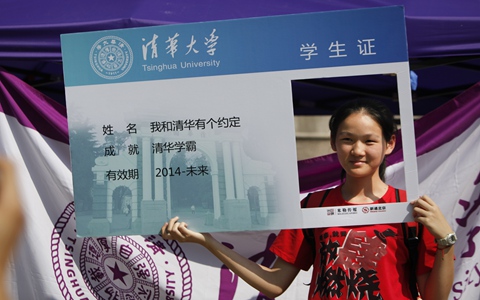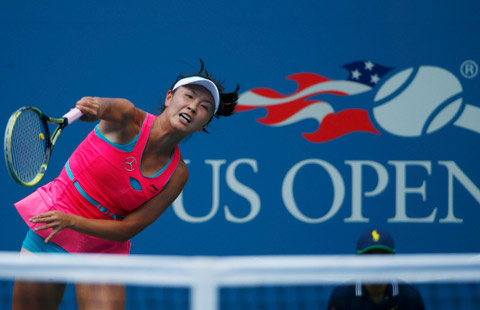
Regional college enrollment differences a key target in blueprint for reform
The Ministry of Education said on Thursday that it will continue its efforts to narrow the gap in college enrollment in different regions to ensure nationwide equality in higher education.
Education Vice-Minister Du Yubo said at a news conference in Beijing that by 2017 the gap between provinces and regions with the lowest college enrollment rate and the national average should be no more than 4 percentage points.
The news conference introduced details of reform measures in the education system, including exams and recruitment.
Narrowing the regional gap in college enrollment and ensuring that students from across the country have equal access to higher education is one of the focuses of the reform. Du said the government has been taking measures to narrow the gap.
By implementing a preferential enrollment policy that requires colleges to recruit more students from central and western regions, 200,000 students from these regions have been recruited since 2008, Du said.
He also said that last year, the lowest college enrollment rate among all provinces and regions in China was 70 percent, or 6 percentage points lower than the national average, while the gap in 2007 was 17 percentage points.
Rural students have gained greater access to good universities, with the implementation of a policy to improve their chances of being admitted by such universities.
The policy, which took effect in 2012, covers 832 impoverished counties nationwide.
"This year, 50,000 rural students were admitted to good universities, marking an 11.4 percent increase from last year," Du said.
To achieve the goal set for 2017, Du said, the ministry will continue implementing the preferential-enrollment policies, while fully considering regional differences when drawing up each year's recruitment plan. The ministry will also consider many other factors, including the number of students, education resources and the graduates' employment prospects.
Chu Zhaohui, a senior researcher at the National Institute of Education Sciences, said the preferential policy "promoted education equity to some extent", but still needs to be improved.
Chu said some problems have arisen, such as the children of some officials in these regions taking advantage of the policy to gain admission to good universities.
"One way to get rid of these problems is to reduce the administrative power in enrollment and to allow universities to have a bigger say in what kind of students and talent they would like to recruit," he said.
With the purpose of promoting education equity and selecting talent in a more scientific way, education reform includes measures such as canceling the division of students into different tracks in high school.
Previously, students were asked to follow a science or a liberal-arts track according to their interests and needs.
Currently, students on both tracks should learn Chinese, math and English. But in addition, those following the science track should learn physics, chemistry and biology, while students on the liberal-arts track should learn history, geography and politics, which will be tested in the national college entrance exams, or gaokao.
In the future, students should learn all nine subjects and take tests before the gaokao, and they can choose any three elective subjects if their scores are satisfactory. Colleges will then admit students on the basis of the scores of the three subjects, as well as their test results in Chinese, math and English.
zhaoxinying@chinadaily.com.cn
(China Daily 09/05/2014 page3)








